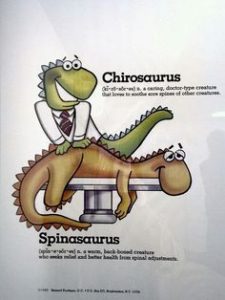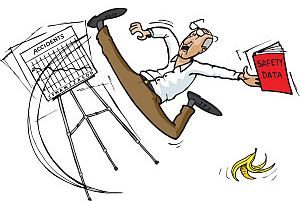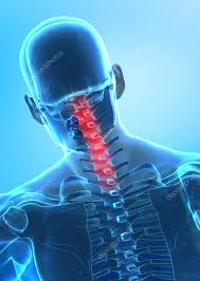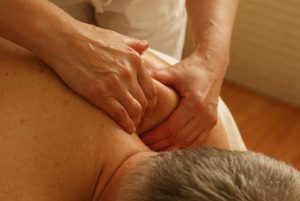Here’s a Little Humor to Finish the Week!

We hope you have a wonderful weekend! Stay warm and safe!

We hope you have a wonderful weekend! Stay warm and safe!
 While we’ve all seen the old banana peel skit, slips and trips in the real world are no laughing matter. Simply falling to the floor or pavement from an upright position causes a great many serious injuries—and even deaths—each year. No one really knows for certain how many falls could actually be prevented, but the topic is of growing interest to a wide variety of people, from public health officials, designers, architects and community planners to business owners, workplace supervisors and employees. Senior citizens are perhaps the most at risk. The U.S. Centers for Disease Control and Prevention (CDC) presents several statistics that highlight this point:
While we’ve all seen the old banana peel skit, slips and trips in the real world are no laughing matter. Simply falling to the floor or pavement from an upright position causes a great many serious injuries—and even deaths—each year. No one really knows for certain how many falls could actually be prevented, but the topic is of growing interest to a wide variety of people, from public health officials, designers, architects and community planners to business owners, workplace supervisors and employees. Senior citizens are perhaps the most at risk. The U.S. Centers for Disease Control and Prevention (CDC) presents several statistics that highlight this point:
Walking is a very complex activity, and science has only recently begun to understand the biomechanics involved. Shirley Wang wrote in a recent Wall Street Journal article, “Scientists are finding that maintaining stability and balance with each step we take requires complex coordination of foot placement, arm movement, trunk angle and neck and head motion.” At the same time, researchers are also learning how other factors like sloping, uneven or slippery surfaces and obstructions come into play. There are many variables to consider. Even when the body’s movements are perfectly coordinated, small things about environment can still foil our best efforts to remain upright.
We know from nervous system studies that the body is capable of reacting within milliseconds. Science has shown that a person’s balance is maintained by simultaneous feedback from the body’s visual system, proprioceptive system and inner ear. If one of these systems becomes less efficient or fails altogether, then the other two can usually compensate to keep us balanced. If two fail, then balance becomes far more difficult. Aging frequently leads to poorer eyesight and troubles with the inner ear, so it’s small wonder that seniors are more likely to fall.
Canadian researchers at Simon Fraser University used video cameras in a long-term care facility to see if seniors were right about “tripping” or “slipping” being the reasons for their falls. What they found was surprising. Tripping actually accounted for only 20% of events. The nearly 3-year study of 227 falls involving 130 people showed that the single largest cause (41%) was from improper weight shifting, such as leaning over too far. This seems to indicate a failure in the seniors’ proprioceptive system.
There are a few ways you can help to prevent slips and falls. Be sure to keep walkways clear of clutter, and consider adding non-skid material to flooring—especially to floors that are more likely to become wet. Maintaining your strength helps too. Upper body strength is particularly important for catching yourself before or during a fall. Even when there’s nothing to grab onto, having the sort of upper body strength that helps you to do push-ups can soften the blow to more sensitive parts of the body. Reaching out with hands and flexing elbows upon impact can slow the fall or stop it altogether. The late Jack LaLanne, fitness guru, was still doing fingertip pushups at age 93. Don’t say it can’t be done!
Balance requires that every part of the body works well together. Dr. Oblander can help you maintain this balance by ensuring you have a healthy spine and nervous system. He can also recommend specific exercises that maintain or increase your upper body strength. So if you or someone you care about is interested in avoiding slips and falls, we can help you take advantage of the latest research! Just call or visit our office today: 406-652-3553!
 A very recent review of prophylaxis of migraine was published in the Canadian Medical Journal (1). To say the least, their findings were remarkable. Although this was a medically oriented review, several herbal and nutritional approaches were rated as effective as drug therapy with significantly fewer reported adverse events. Table 1 is a summary of the findings of the review for interventions when the outcome measure used was the odds ratio of a 50% decrease in frequency of migraine. All findings were based on studies that were graded by the authors as A or B evidence based on the United States Preventive Services Task Force criteria.
A very recent review of prophylaxis of migraine was published in the Canadian Medical Journal (1). To say the least, their findings were remarkable. Although this was a medically oriented review, several herbal and nutritional approaches were rated as effective as drug therapy with significantly fewer reported adverse events. Table 1 is a summary of the findings of the review for interventions when the outcome measure used was the odds ratio of a 50% decrease in frequency of migraine. All findings were based on studies that were graded by the authors as A or B evidence based on the United States Preventive Services Task Force criteria.
Table 1
| Intervention | Quality of evidence | Odds ratio of 50% decrease in frequency |
Adverse effects |
| Divalproex | A | 2.74 | Frequent at higher dosages |
| Gabapentin | B | 4.51 | Occasional |
| Topirmate | A | 2.44 | Frequent |
| Amitriptyline | B | 2.41 | Occasional |
| Propranolol | B | 1.94 | Infrequent |
| Riboflavin (400 mg/day) | A | 5.60 | Infrequent |
| Butterbur (50 mg B.I.D) | A | 2.24 | Infrequent |
Pharmaceutical interventions are obviously favored by the medical community even when, at least according to this review, riboflavin and butterbur demonstrate equal or superior effectiveness in A graded studies yet report infrequent adverse effects.
Butterbur: A 2006 systematic review reported on 2 randomized trials (RCT) of butterbur extract (Petasities hybridus) which totaled 293 patients. In these studies a 150 mg dose of butterbur was more effective than a 100 mg dose over a period of 3 to 4 months. Overall butterbur demonstrated a decreased frequency of migraine in over 50% of patients. The brand name of the form of butterbur used in this study was Petadolex (2). In an open label study of 109 children and adolescents the authors found 77% of all patients reported at least a 63% reduction in the frequency of migraine (3). Although no significant adverse effects have been reported in the studies mentioned above, concerns relating to hepatotoxicity have been reported in the literature. A recent study utilizing Petadolex found it to be “free of signals for drug induced liver injury” (3). Several authors have suggested butterbur may be a valuable tool in the prevention of migraine (4-7).
Feverfew: Feverfew is herb that has demonstrated effectiveness in the prevention of migraine in some studies and conflicting results in other studies. Three Cochrane reviews have been published relating to feverfew. The original review could not demonstrate efficacy for feverfew (8) but an update published the same year reported “feverfew is likely to be effective in the prevention of migraine (9). The third review returned to the original position stating “there is insufficient evidence” to suggest an effect (10). A separate article suggested the reason for lack of efficacy reported in the most recent Cochrane review was the 400% variation in the active ingredient in the studies evaluated (5). One RCT published after the Cochrane reviews showed migraine attacks decreased from 4.76 attacks per month to 1.9 when using MIG-99 after 3 months. A dosage of 6.25 mg t.i.d. were used (11). All studies reported a favorable safety profile.
Coenzyme Q10: Coenzyme Q10 has demonstrated efficacy in 1 RCT and several open trial design studies. The RCT was a study of 42 patients. The dosage was 100 mg t.i.d. There was a 50% decrease in headache frequency in 42.6% of the patients in the active treatment group compared to 14.4% in the placebo group after 3 months. The number needed to treat was 3 (12). Another case series found similar benefits using 150mg daily (13). None of the studies on coenzyme Q10 reported adverse effects.
Riboflavin: A RCT compared a combination of riboflavin (400 mg), magnesium (300 mg) and feverfew (100 mg) to 25 mg of riboflavin. Both groups achieved statistically significant improvements over baseline. The authors noted both groups exceeded the normal placebo response reported in other migraine prevention studies. This study suggests a small dose of riboflavin may be an effective prophylaxis for migraine (14). Another RCT using 400 mg daily reported statistically significant improvements in headache frequency and headache days after 3 months. The number needed to treat in this study was 2.3 (15). Unfortunately 2 studies of riboflavin in children did not demonstrate improvement (16;17).
Magnesium: A 2008 RCT examined the prophylactic effect of 600 mg of magnesium citrate daily for 3 months compared to a placebo. Statistically significant improvements in frequency and severity were found in the treatment group. Additionally cortical blood flow increased significantly in the treatment group (18). A second RCT also found a statistically significant decrease in migraine frequency after 3 months using 360/mg per day (19). Not all RCTs have shown magnesium to be of effective. A 1996 RCT found no benefit when using magnesium (20). Soft stools and diarrhea were a common mild adverse event occurring in 18.6% (19) to 47.7% (20) in the magnesium groups.
Several other interventions have limited evidence demonstrating effectiveness. They include ginkgolide B (21), lipoic acid ( 600 mg/day) (22) and fish oil or olive oil (23).
It should be noted that time frame of treatment almost all prevention studies is 3 months. Treatment success or failure should not be assessed prior to completion of 3 months of the intervention.
Article is shared from www.chiroaccess.com
[amd-zlrecipe-recipe:3]
Today’s Rice Pudding Recipe was shared from the following website: https://sweetleaf.com/stevia-recipes/sugar-free-cinnamon-vanilla-rice-pudding/

A healthy spine is an often overlooked and essential part of a healthy lifestyle. People who suffer from back pain, particularly if it is long-term, are generally less healthy than those who do not. In fact, back pain costs are staggering not only financially, but also in terms of lost time from work and because of psychosocial problems that arise during the healing process associated with long-term back pain.
Unfortunately, approximately 80-90% of the population suffers from spinal pain at some point. People who are overweight or obese, and who smoke, lift heavy objects, or had a previous episode of back pain, are more likely to experience back pain.
Because so many people suffer from spine pain, it’s important for you to try to keep your spine as healthy as possible. Following simple posture, lifting, and healthy lifestyle guidelines can help you keep your back in good shape. One of the best things you can do for your spine is to get regularly adjusted. If you are in need of an adjustment, be sure to call our office at 406-652-3553 and schedule an appointment with Dr. Oblander. In the meantime, here are some good ways to take care of your spine:
The American Chiropractic Association recommends the following spinal health tips:
Standing
• When standing, keep one foot slightly in front of the other, with your knees slightly bent. This position helps to take the pressure off your low back.
• Do not stand bent forward at the waist for prolonged periods of time. The muscles in your low back become deconditioned in this position, which may lead to pain.
Lifting
• At all times, avoid twisting while lifting. Twisting is one of the most dangerous movements for your —spine, especially while lifting.
• If the item is too heavy to lift, pushing it is easier on your back than pulling it. Whenever possible, use your legs, not your back or upper body, to push the item.
• If you must lift a heavy item, get someone to help you.
Sitting
• Keep your knees slightly higher than your hips, with your head up and back straight.
• Avoid rolling your shoulders forward (slouching).
• Try to maintain the natural curve in your low back.
Reaching and Bending
• When reaching for something above shoulder level, stand on a stool. Straining to reach such objects may
not only hurt your mid-back and neck, but it can also bring on shoulder problems.
• Do NOT bend over at the waist to pick up items from the floor or a table.
• Instead, kneel down on one knee, as close as possible to the item you are lifting, with the other foot flat on the floor and pick the item up.
• Or bend at the knees, keep the item close to your body, and lift with your legs, not your back.
Carrying
• When carrying objects, particularly if they are heavy, keep them as close to your body as possible.
• Carrying two small objects—one in each hand—is often easier to handle than one large one.
Healthy Diet and Exercise
• While the proverbial jury is still out, we suspect that extra weight puts undue strain on your spine. Keep within 10 lbs. of your ideal weight for a healthier back.
• “Beer belly” is likely the worst culprit, as it puts unwanted pressure on the muscles, ligaments and ten- dons in your low back.
• The most efficient and effective way to reduce weight is by eating a sensible diet and exercising regularly.
• Consult with your doctor before beginning any exercise program, particularly if you have a health condition.
Sleeping
• Sleeping on your back puts approximately 50 pounds of pressure on your spine. Other positions may be better
.
• Placing a pillow under your knees while lying on your
back cuts the pressure on your spine roughly in half.
• Lying on your side with a pillow between your ——– knees may also reduce the pressure on your back.
• Never sleep in a position that causes a portion of —- your spine to hurt. Most often, your body will tell you what position is best.
Quit Smoking
Smokers have more spine pain than nonsmokers, and they also heal more slowly when they have an episode of back pain because the chemicals in tobacco smoke restrict the flow of blood to the tissues in and around your spine.
While following these instructions is no guarantee that you’ll be free from back pain for your entire life, it can certainly reduce your risk of developing it. These simple steps will help you keep your spine in good shape, making you a healthier, happier person.
Lawrence H. Wyatt, DC, DACBR, FICC, Professor, Division Of Clinical Sciences, Texas Chiropractic College, Writer
Nataliya Schetchikova, PHD, Editor
This health article was shared from the following website: http://www.chiroworkscarecenter.com/documents/Articles/ACA_healthy_spine.pdf
[amd-zlrecipe-recipe:2]
[amd-zlrecipe-recipe:1]
Here is a healthy, low-sugar and no refined sugar recipe! You might think about making a batch for Sunday brunch this weekend!
 Statistics compiled by the American Chiropractic Association (ACA) tell us that back pain affects a large majority of the population, with roughly 80 percent of people enduring at least one back-related issue during the course of their lives. In fact, there are currently 31 million people in the U.S. alone dealing with chronic, daily back pain.
Statistics compiled by the American Chiropractic Association (ACA) tell us that back pain affects a large majority of the population, with roughly 80 percent of people enduring at least one back-related issue during the course of their lives. In fact, there are currently 31 million people in the U.S. alone dealing with chronic, daily back pain.
With these types of numbers floating around, chiropractic patients may feel as if their back pain is inevitable, making the seeking of treatment futile. However, one recently released study review says otherwise, that is, as long as the treatment plan includes chiropractic.
The Journal of the American Medical Association (JAMA) published a systematic review and meta-analysis conducted by 10 medical professionals from medical centers, universities, and healthcare systems across the U.S. The main question this group set out to answer was, “Is the use of spinal manipulative therapy in the management of acute (≤6 weeks) low back pain associated with improvements in pain or function?”
After taking a more in-depth look at 26 different randomized clinical trials occurring between January of 2011 and February of 2017, all of which involved spinal manipulative therapy (SMT), this set of researchers found that, in 15 of the studies, this particular treatment option provided “statistically significant benefits” for the 1,711 patient subjects when it came to lowering their levels of pain. In this same group of studies, almost half of the cases (12) also found major positive effects in regard to the level of function of the 1,381 participants when compared to sham chiropractic or other treatment methods.
It should also be noted that, while 50 to 67 percent of the participants in these studies reported experiencing headaches, muscle stiffness, or even increased pain after SMT, no serious adverse events occurred. This helps confirm chiropractic’s safety, making it a viable method of treating acute back pain episodes quickly and effectively.
These findings are extremely important as another statistic offered by the ACA is that approximately 50 percent of the working population has struggled with some type of back-pain issue in the previous 12 months. Thus, one very effective way to keep them earning an income and supporting their families in a manner that treats the symptoms and cause of their pain is regular and consistent chiropractic care.
This saves them both time off work and money due to unnecessary (and usually costly) medical bills, enabling them to spend both on the things they enjoy instead.

As we mentioned in Wednesday’s post, we are going to be sharing
recipes that taste great but don’t have refined sugar. Here’s a link
to a great recipe! Lots of yumminess and no refined sugar!:

Sugar is in almost everything we eat. In the typical western diet, enough sugar has been added to food products to bring our consumption of the sweet stuff up to 22.7 teaspoons per day. It is added to processed foods to extend shelf life and enhance flavor and texture. While we know that sugar contributes to weight gain, diabetes and heart disease, it’s still hard to resist. Why? Much of the answer to that question has to do with the way humans have evolved to survive in times of scarcity.
Our ancestors who had developed a taste for sugar were able to add to their body fat, which helped to keep them alive during periods of famine. This in turn allowed them to pass their sweet-loving genes on to their progeny. A study conducted by researchers at Washington University found that we are programmed from birth to crave sweet things. Human breast milk is very sweet due to the concentration of the sugar lactose, so from day one we learn to develop a sweet tooth.
One study showed how even the mere expectation of sugar can affect our cognitive ability. Scientists found that when study subjects swished sugar water around in their mouths and then spit it out, they performed better on cognitive tests than the subjects who had swished water that had been artificially sweetened. And there is a good reason why sugar is addictive. Eating sugar prompts the release of the hormone serotonin from the same area of the brain that responds to heroin and cocaine, inducing a feeling of happiness and euphoria.
It’s not always obvious where sugar is hiding in the foods we eat. While our consumption of table sugar is down, the amount added to processed foods is increasing. Many people are surprised to find how much sugar is added to such things as bologna (1.18 tsp. per 4 slices), ketchup (1.77 tsp. per 3 tbsp.) and low-fat fruit yogurt (6.16 tsp.). A couple of spoons of barbecue sauce have about as much sugar as a glazed donut! Add in the sugars typically contained in soups, sauces and breads, and it’s easy to see why obesity is becoming such an epidemic. The more we get, the more we want. A sudden rush of sugar spurs the release of insulin, which causes the infamous “sugar crash” and makes us crave even more to combat it.
However, it is possible to overcome an addiction to sugar, just as it’s possible to overcome an addiction to any other substance. Gradually use less where you can, such as in coffee or tea and in your breakfast cereal. You can also reduce or eliminate your consumption of soda (including artificially sweetened soda, which still makes you crave the sweet taste) and water down any fruit juices you may drink. After a while, your body does adjust to the taste. After a few months, if you suddenly are given coffee with sugar in it, you may find it tastes odd. Try to avoid buying store-bought desserts, and if you make your own, reduce the amount of sugar called for in the recipe. Many baked goods can use unsweetened applesauce as a substitute for 2/3 of the sugar required.
Our society has made it difficult to resist sugar, but it’s not impossible, and the less sugar you eat, the better it will be for your overall health.
At Oblander Chiropractic, we are working hard to help our patients live lives of health and wellness. As a part of that effort, we are going to be sharing recipes that replace refined sugar with natural sugars. Be sure to watch our posts for those recipes!